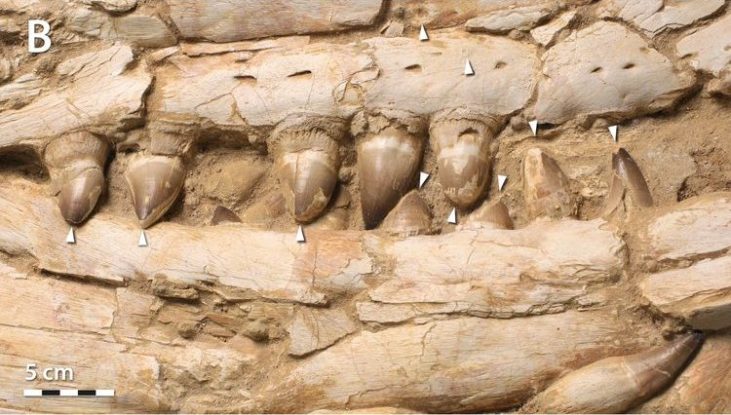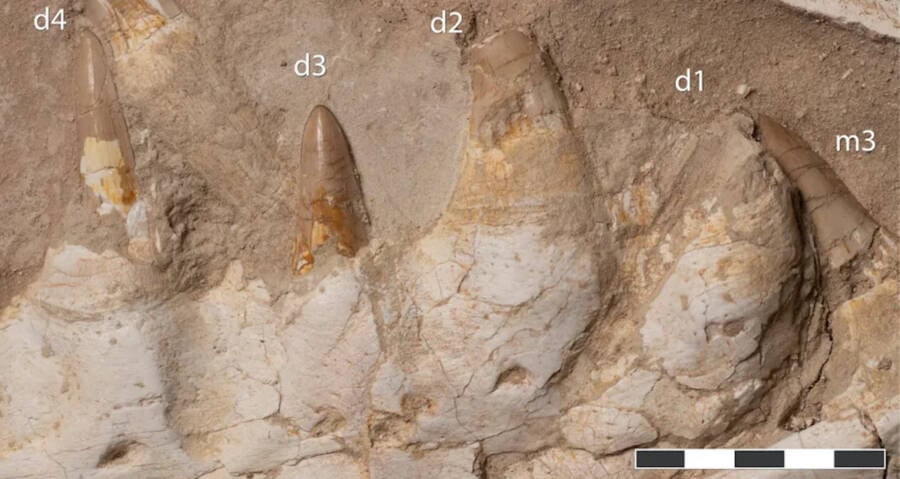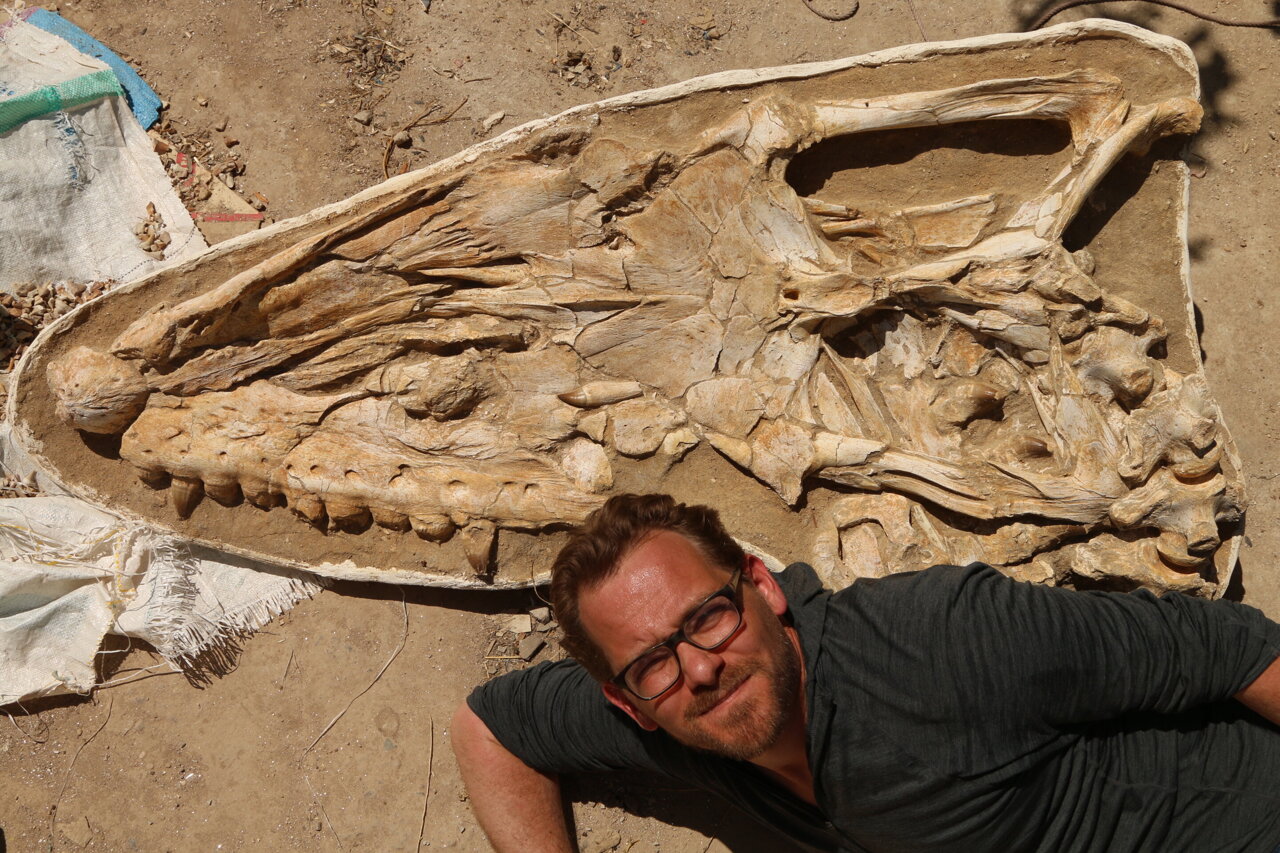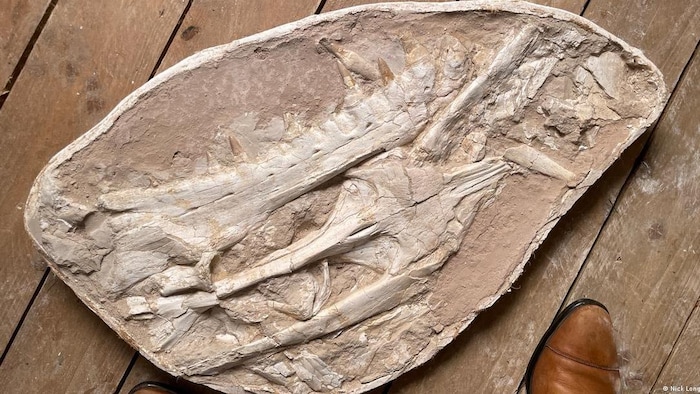
Paleontologists have discovered a strange new species of marine lizard with dagger-like teeth that lived near the end of the age of dinosaurs. Their findings, published in Cretaceous Research, show a dramatically different ocean ecosystem to what we see today, with numerous giant top predators eating large prey, unlike modern ecosystems where a few apex predators—such as great white sharks, orca and leopard seals—dominate.

Khinjaria acuta was a member of the family Mosasauridae, or mosasaurs. Mosasaurs weren’t dinosaurs, but giant marine lizards, relatives of today’s Komodo dragons and anacondas, which ruled the oceans 66 million years ago, during the era of Tyrannosaurus and Triceratops.

Khinjaria had powerful jaws and long, dagger-like teeth to seize prey, giving it a nightmarish appearance. It was part of an extraordinarily diverse fauna of predators that inhabited the Atlantic Ocean off the coast of Morocco, just before the dinosaurs went extinct.

The study is based on a skull and parts of the skeleton collected from a phosphate mine southeast of Casablanca. The study involved researchers from the University of Bath in the UK, the Marrakech Museum of Natural History, the Museum National d’ Histoire Naturelle (NMNH) in Paris (France), Southern Methodist University in Texas (U.S.), and the University of the Basque Country (Bilbao).
“What’s remarkable here is the sheer diversity of top predators,” said Dr. Nick Longrich of the Department of Life Sciences and the Milner Centre for Evolution at the University of Bath, who led the study. “We have multiple species growing larger than a great white shark, and they’re top predators, but they all have different teeth, suggesting they’re hunting in different ways.”

“Some mosasaurs had teeth to pierce prey, others to cut, tear, or crush. Now we have Khinjaria, with a short face full of huge, dagger-shaped teeth. This is one of the most diverse marine faunas seen anywhere, at any time in history, and it existed just before the marine reptiles and the dinosaurs went extinct.”
Morocco’s diverse marine reptiles lived just before an asteroid struck the Yucatan Peninsula in Mexico. Dust and fine particles shot into the high atmosphere and blocked out the sun for months, causing darkness and cooling, which drove most of the planet’s species to extinction.

Dinosaurs were wiped out on land, and a handful of surviving species of mammals, birds, and lizards diversified to take their place. Meanwhile, the same happened in the oceans.
Mosasaurs, plesiosaurs, and giant sea turtles disappeared, along with entire families of fish. This opened the way for whales and seals, and fish like swordfish and tuna appeared. However, the ecosystem that evolved after the impact was different.